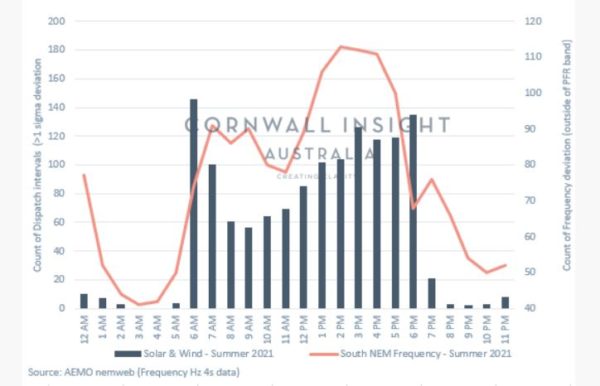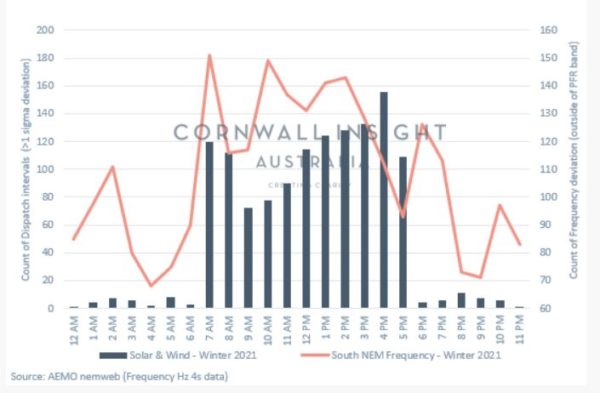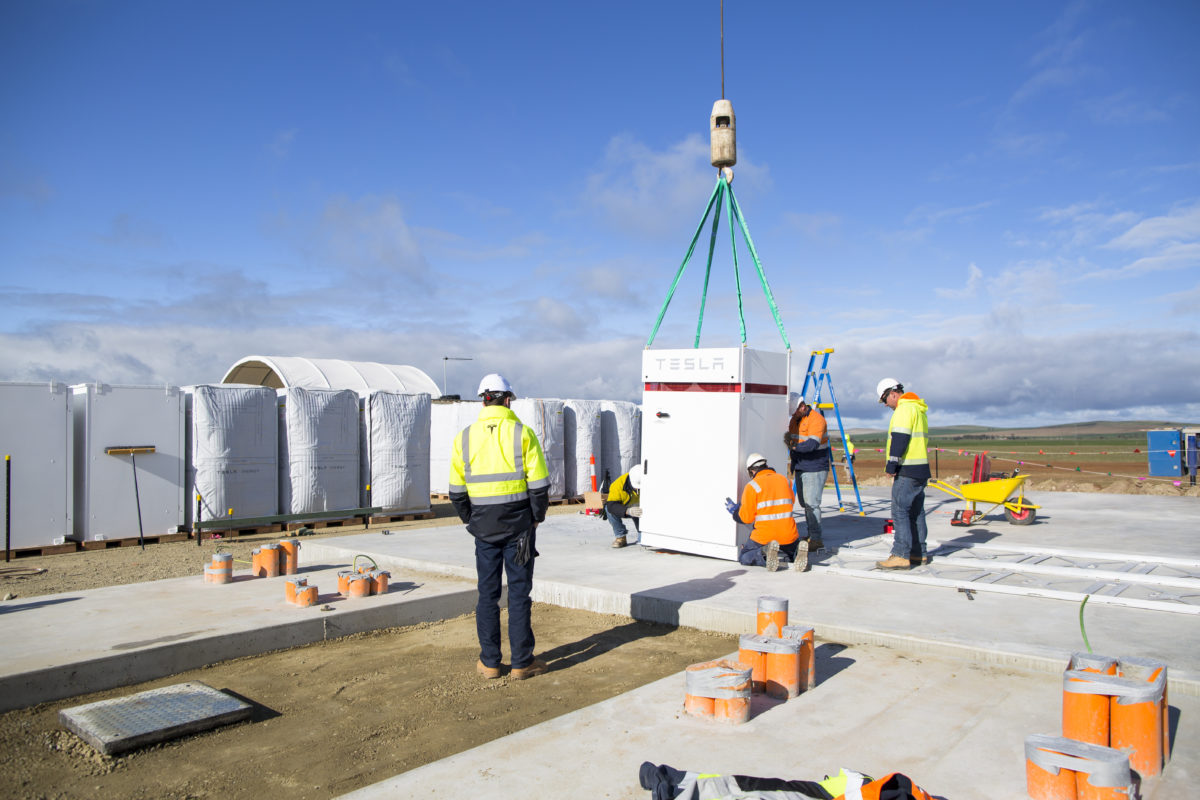The Australian Energy Market Operator (AEMO) reports that the national electricity market (NEM) frequency has improved significantly since implementing the first tranche of generator PFR settings. Frequency deviation has been much narrower, highlighting the benefit of tighter frequency response under normal conditions.
Having said that, in the face of rapid growth of variable renewable energy (VRE) and distributed rooftop solar, frequency control remains a challenge for AEMO, which is yet to be solved.
In this Chart of the Week, I examine how large-scale wind and solar technologies (excluding distributed rooftop solar – DPV) performed against (and impacted) the time-of-day frequency change during the summer and winter of 2021.
As shown in Figure 1 (Summer 2021), the number of frequency deviations that occurred outside the PFR band was largely concentrated around daytime hours (6am-6pm).
Figure 1 clearly shows that frequency tends to deviate less during the early morning hours and significantly more around 3pm, potentially resulting from higher DPV dispatch.

Image: Cornwall
This trend may get more pronounced as more rooftop/grid solar connects, creating a steeper frequency rump in the afternoons. Figure 1 indicates that frequency deviation in summer is more correlated to renewable output. This might suggest that in summer, frequency is more impacted by VRE. In winter, we observe the opposite.
As seen in the Figure 2, the number of VRE dispatch intervals (> 40MW) is very similar to summer 2021, however frequency behaves differently. This may suggest that other generators (i.e., coal and gas) have greater impact on frequency during winter.
We have seen a higher number of frequency deviations in the winter than in summer, which supports our hypothesis that frequency is more impacted by coal and gas generators in winter.

Image: Cornwall
Can these trends suggest that frequency tend to deviate more during winter? To confirm this further, analysis of DPV, coal, gas, and generator outages needs to be completed.
It is left to be seen how the existing PFR requirements and their associated benefits will incentivise hybrid projects (with/without storage) to provide voluntary and mandatory provision of PFR to help stabilise frequency across the NEM.
In general, it is good news for battery developers and investors as they can have more flexibility when comparing different revenue streams (including potential PFR services) for battery storage assets.
Cornwall Insight Australia’s in-house battery revenue models and subscription services shed light on how prices are likely to evolve going forward, considering the impacts of new regulations.
Author: Andrey Kotov, energy consultant, Cornwall Insights
The views and opinions expressed in this article are the author’s own, and do not necessarily reflect those held by pv magazine.
This content is protected by copyright and may not be reused. If you want to cooperate with us and would like to reuse some of our content, please contact: editors@pv-magazine.com.








By submitting this form you agree to pv magazine using your data for the purposes of publishing your comment.
Your personal data will only be disclosed or otherwise transmitted to third parties for the purposes of spam filtering or if this is necessary for technical maintenance of the website. Any other transfer to third parties will not take place unless this is justified on the basis of applicable data protection regulations or if pv magazine is legally obliged to do so.
You may revoke this consent at any time with effect for the future, in which case your personal data will be deleted immediately. Otherwise, your data will be deleted if pv magazine has processed your request or the purpose of data storage is fulfilled.
Further information on data privacy can be found in our Data Protection Policy.